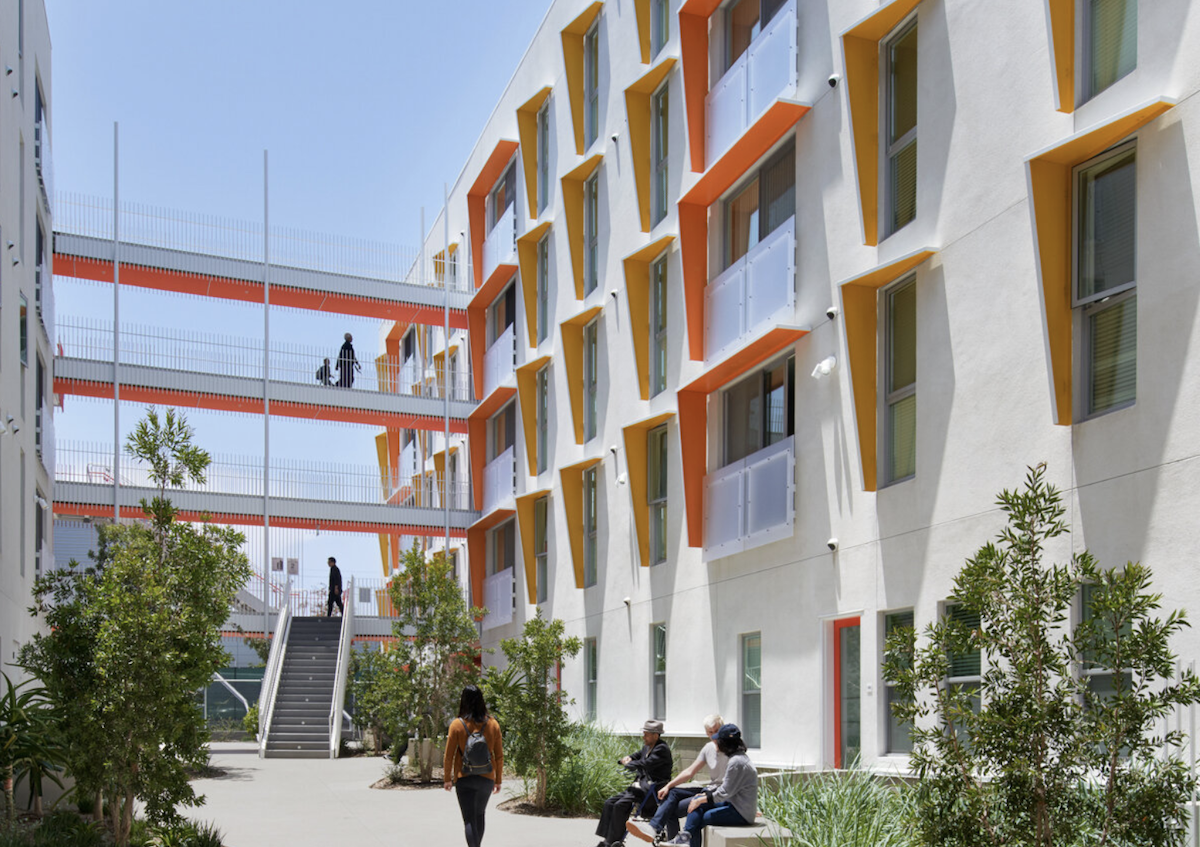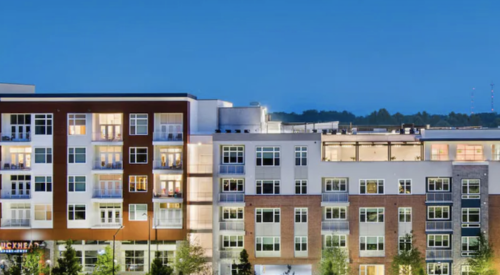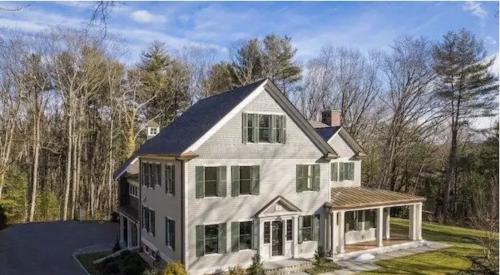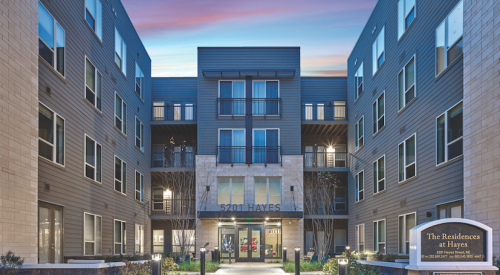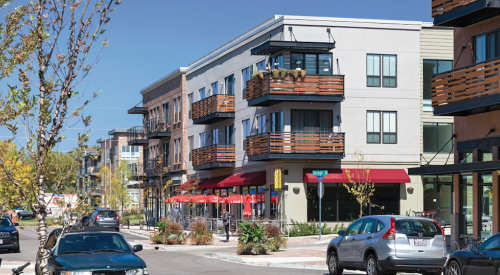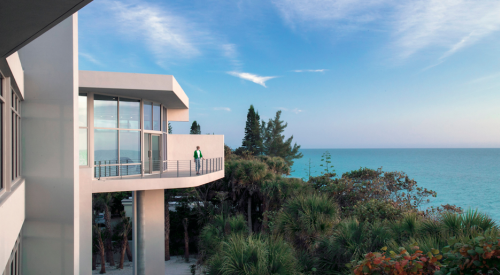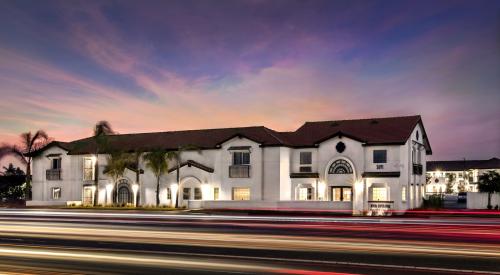The U.S. Green Building Council, the creators of the LEED green building program, has selected outstanding projects in the affordable dwelling category for the 2020 LEED Homes Awards. Currently there are more than 555,000 residential units certified as LEED-qualified because these homes help lower utility bills for families by reducing energy and water consumption while also providing healthier indoor environments by using materials that lower exposure to toxins and pollutants, which results in better air quality.
These three projects won awards in the Outstanding Affordable Project category:
RELATED
More 2020 LEED Homes Awards winners:
The Arroyo LEED Platinum Affordable Housing
Could we create an urban housing typology that does as much for its neighborhood as it does for its residents? Can we make a building that builds a sense of community around a shared notion of environmental connectivity? Those were the questions that the Community Corporation of Santa Monica and Koning Eizenberg asked as developer and architect began to fuse ecological and social benefits into what would become the Arroyo, a LEED Platinum winner. (All photos: Koning Eizenberg Architecture)
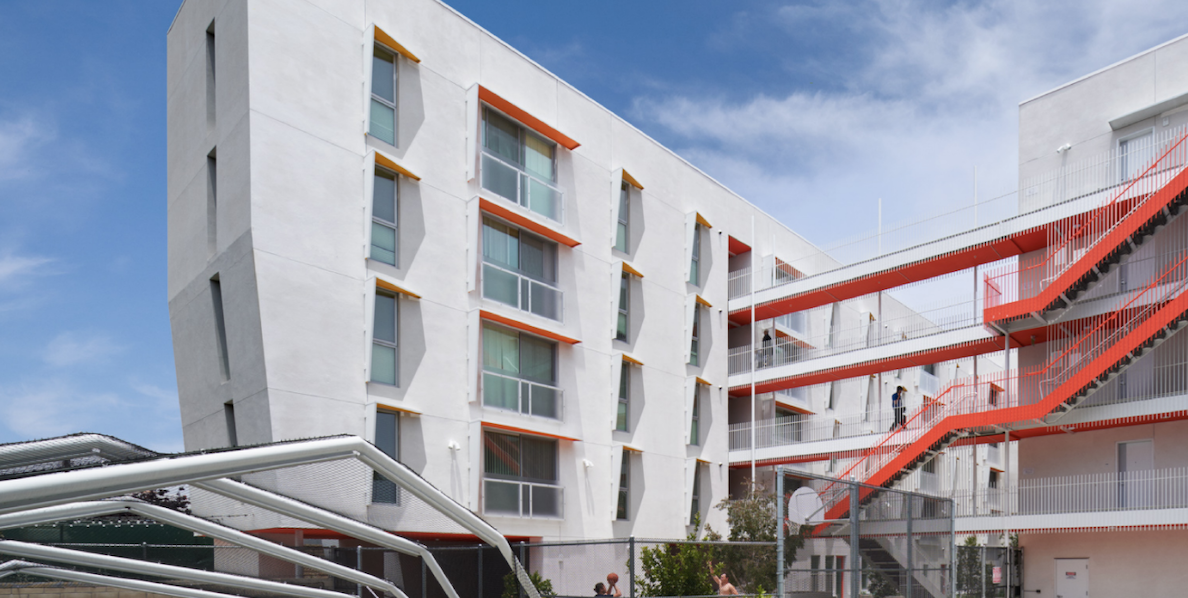
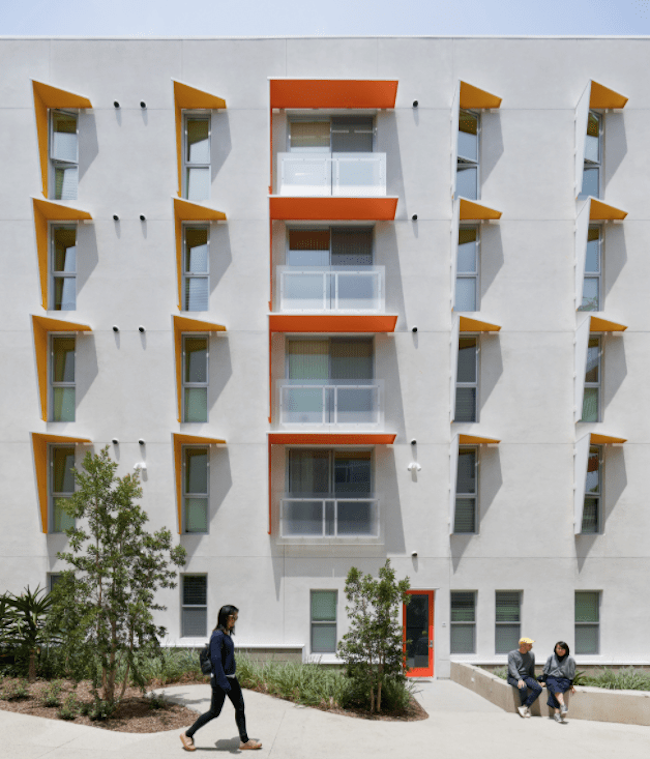
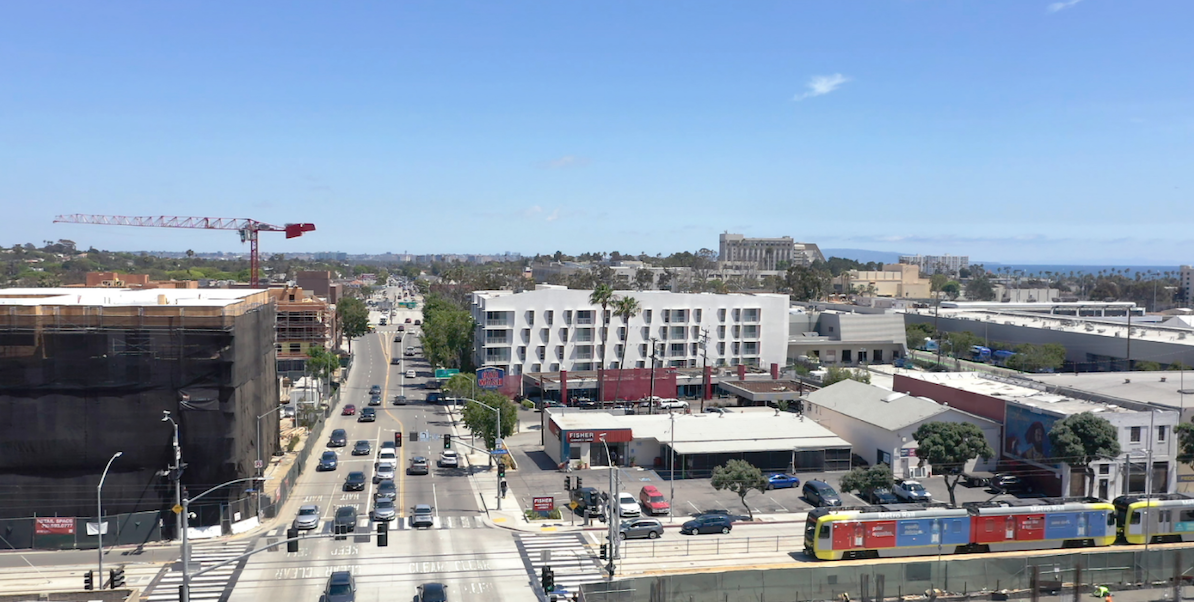
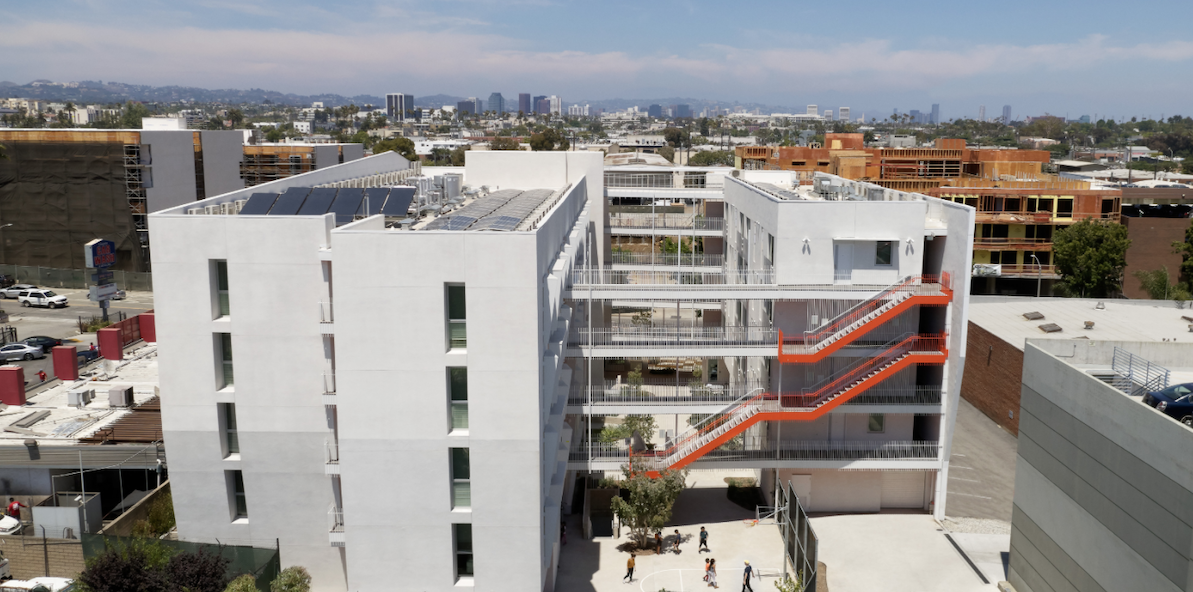
The 83,768-square-foot building is five stories tall. Its massing consists of two parallel bar structures, one single loaded and the other double loaded, which run alongside the open-ended courtyard.
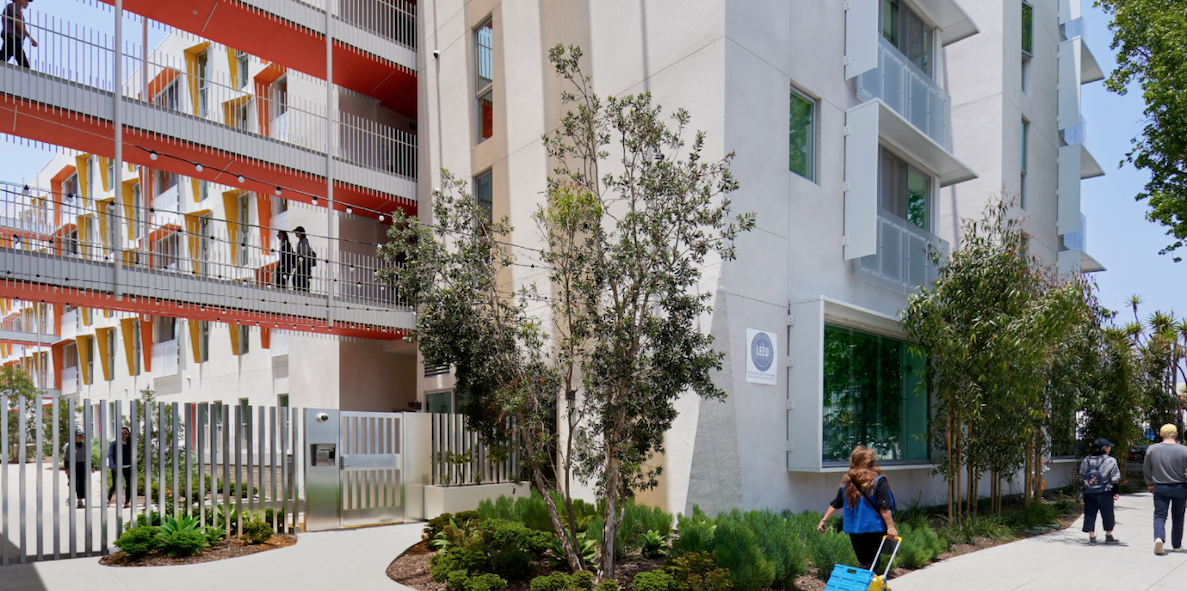
The Arroyo's open-ended courtyard strategy creates a social hub for residents, captures prevailing ocean breezes, and provides daylight to all apartments, while also making the street more pedestrian friendly. The design leverages the real earth below the courtyard for planting large shade trees, creating a serene, shaded community space for residents while also bringing some native California landscape to the street.
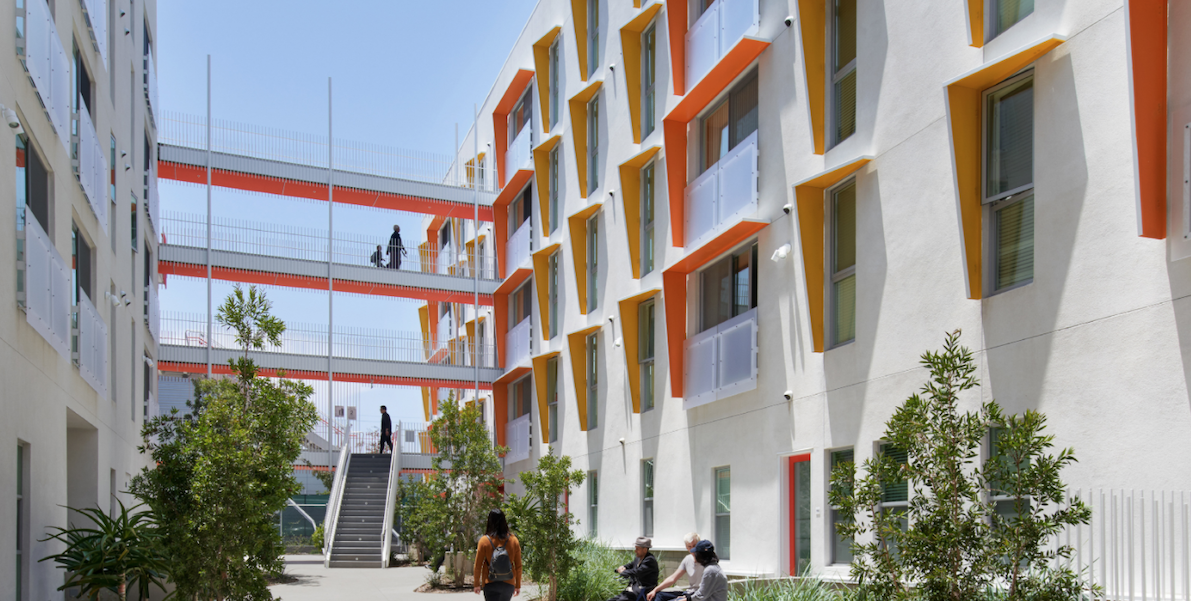
Koning Eizenberg Architecture used building elements that have social, environmental, and economic impact to create the Arroyo's visual identity. Brightly colored undersides of sunshades and bridges visually enliven the experience of the building for residents and pedestrians alike. The sunshades also reduce solar gain, thereby reducing energy demands on cooling systems, while also providing daylighting without glare, which reduces interior lighting demands. The bridges serve to make the life of the building visually accessible to the neighborhood and create moments of encounter between residents and the neighborhood.
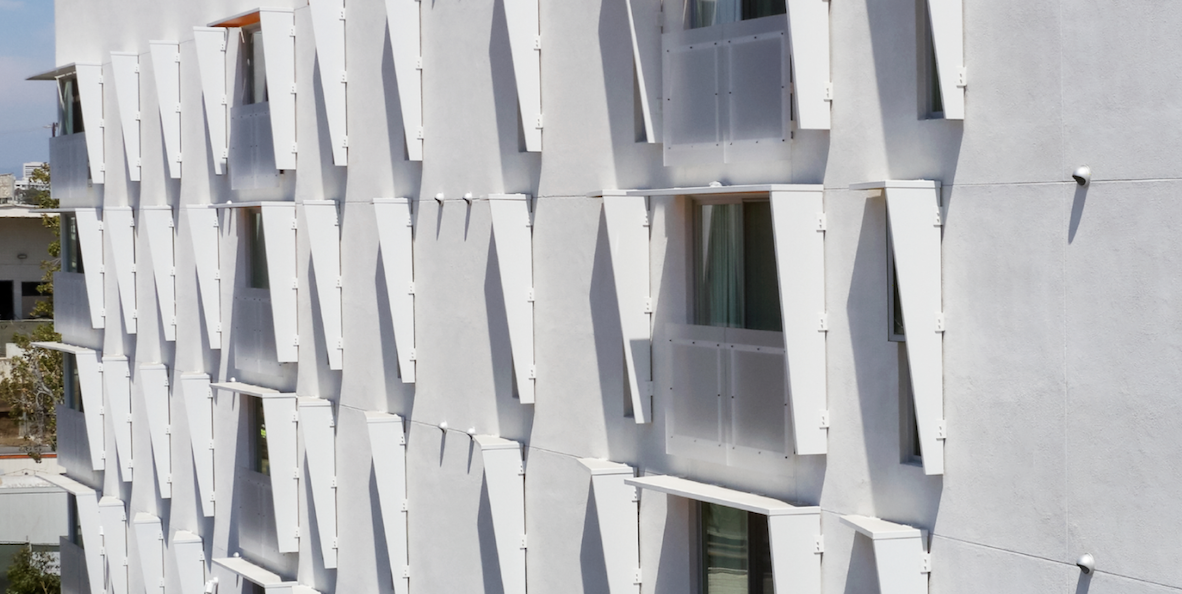
Construction of the project was financed with Affordable Housing Tax Credits, which require use of healthy materials and finishes. A MERV 8 filtered mechanical system and greatly reduced volatile organic compounds (VOCs) help ensure healthy indoor air quality within the dwelling units.
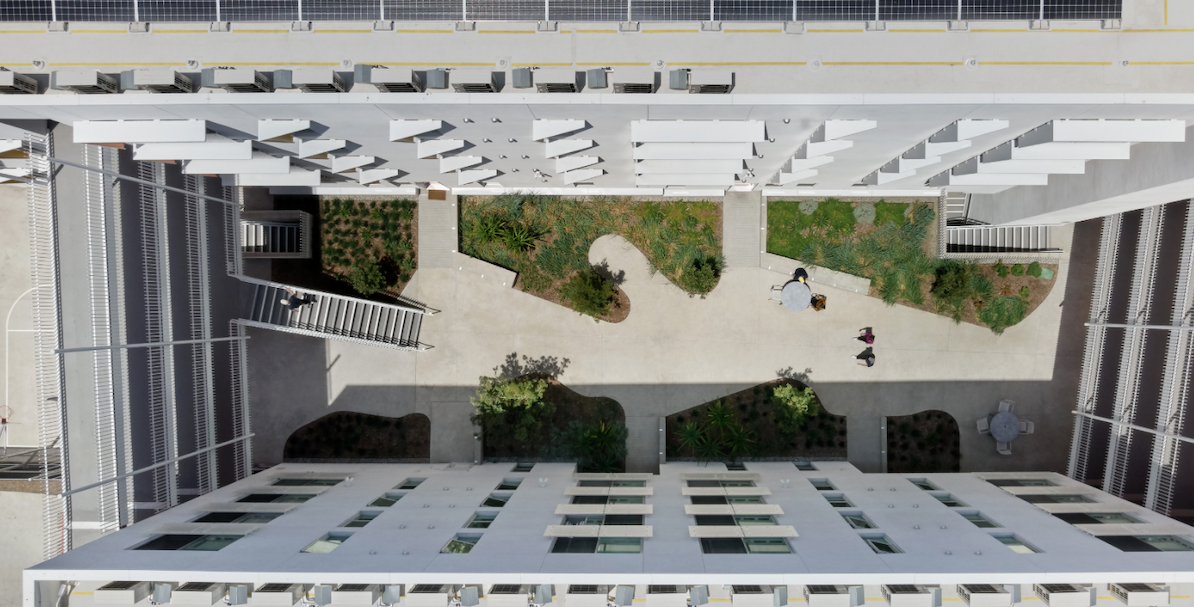
Open-air corridors, bridges, and stairs create a visually dynamic circulation system that aims to create a fun, walkable experience for residents that also serves to make the elevator a less attractive option and encourages an active lifestyle. The bridges flank the east and west of the courtyard and look upon the basketball half-court and courtyard where children ride bikes and residents stroll through the garden. There are 142 bicycle parking spaces on site for both resident families and visitors to the community rooms, which host neighborhood events.
LEED Gold Affordable Housing at Freedom Commons
Freedom Commons, in Syracuse, N.Y., is a $15 million project that is the result of collaboration between the Center for Community Alternatives and Syracuse Housing Authority. The project was developed and designed by Norstar Development USA and Sustainable Comfort. (All photos: Sustainable Comfort)
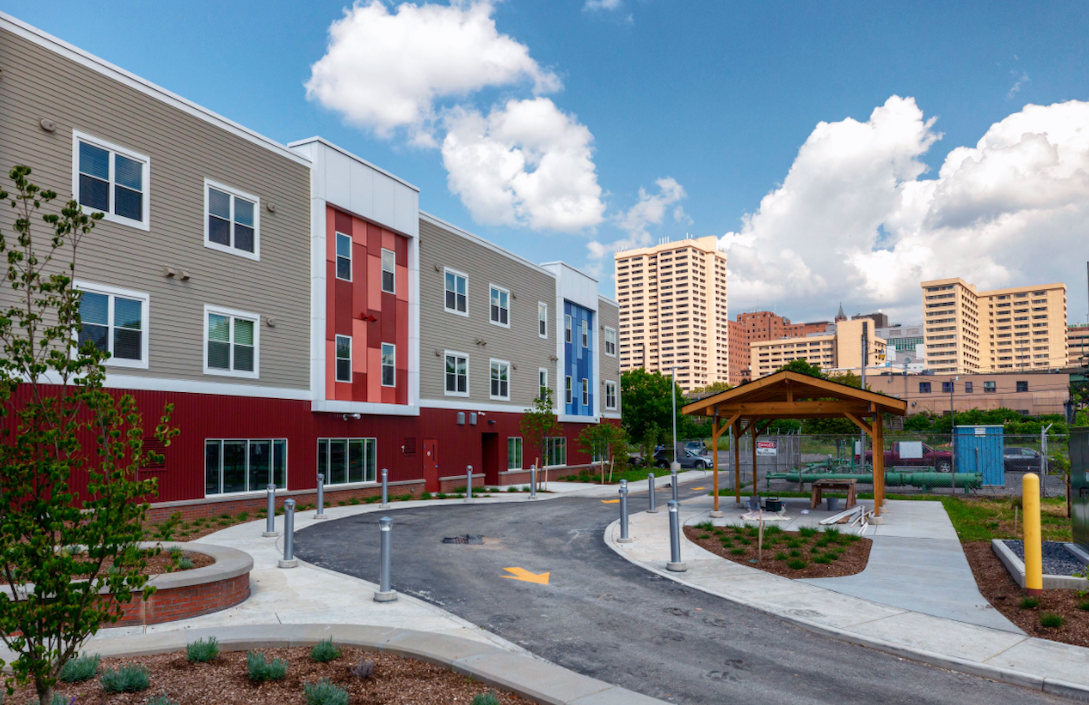
The 72,989-square-foot LEED Gold development supports low-income families, formerly incarcerated residents, and those who have experienced homelessness.
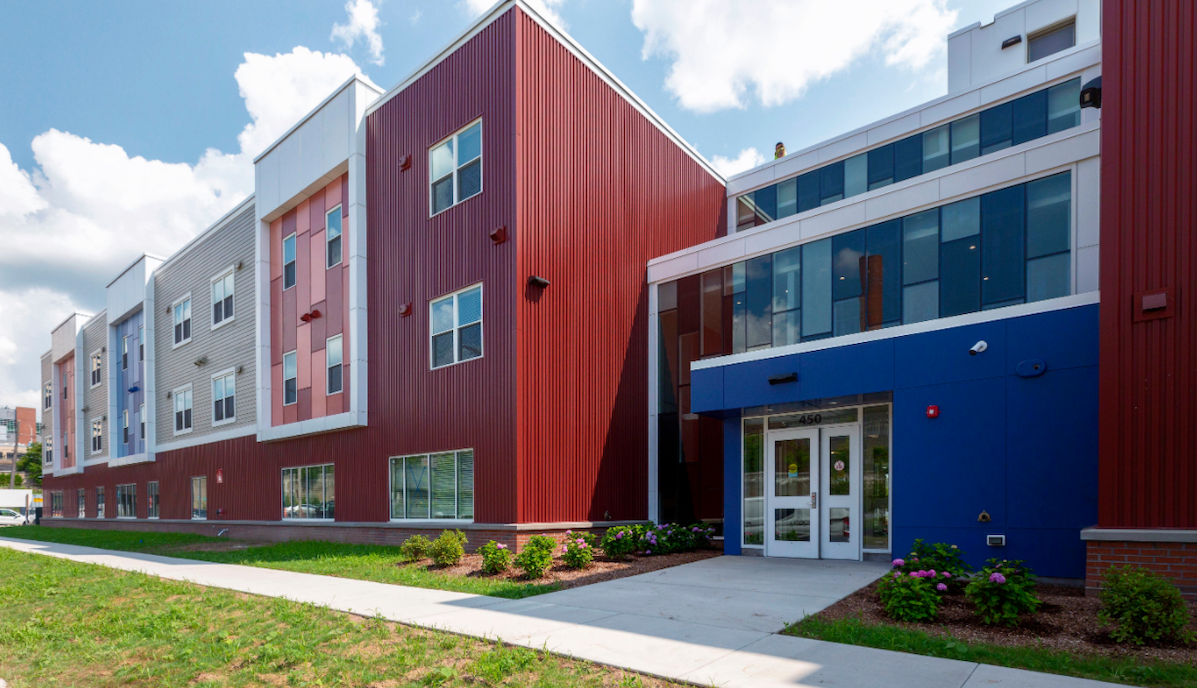
Forty-three of the building’s 54 units are designated as affordable housing and provide comprehensive reentry services that address education, recovery, employment, civic restoration, and case management. The design includes a computer lab, meeting space, laundry facility, and communal dining area.
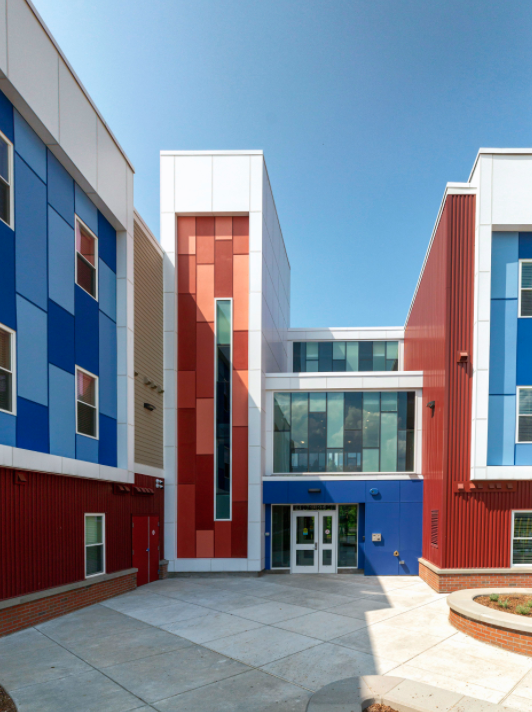
Freedom Commons provides access to transportation and uses a high-performing mechanical system. The building includes LED lighting, Energy Star-qualified appliances, low-flow fixtures with the EPA's WaterSense label, and a healthy indoor environment with dedicated energy recovery ventilation, and individual mechanical system control for residents.
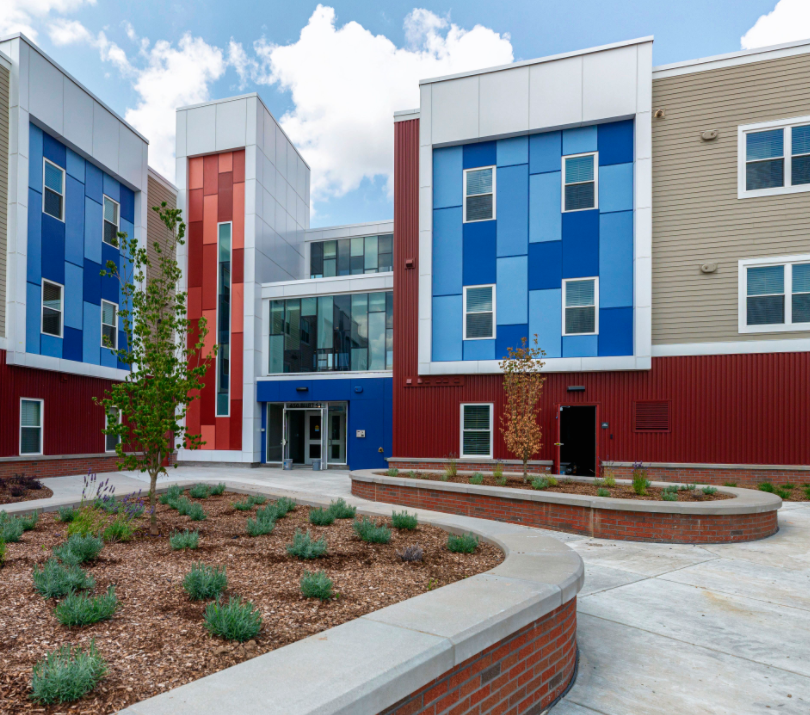
The building creates an urban-residential character for the neighborhood, with a strong street edge, parking pushed to the interior, and inviting stoops that enhance the pedestrian experience.
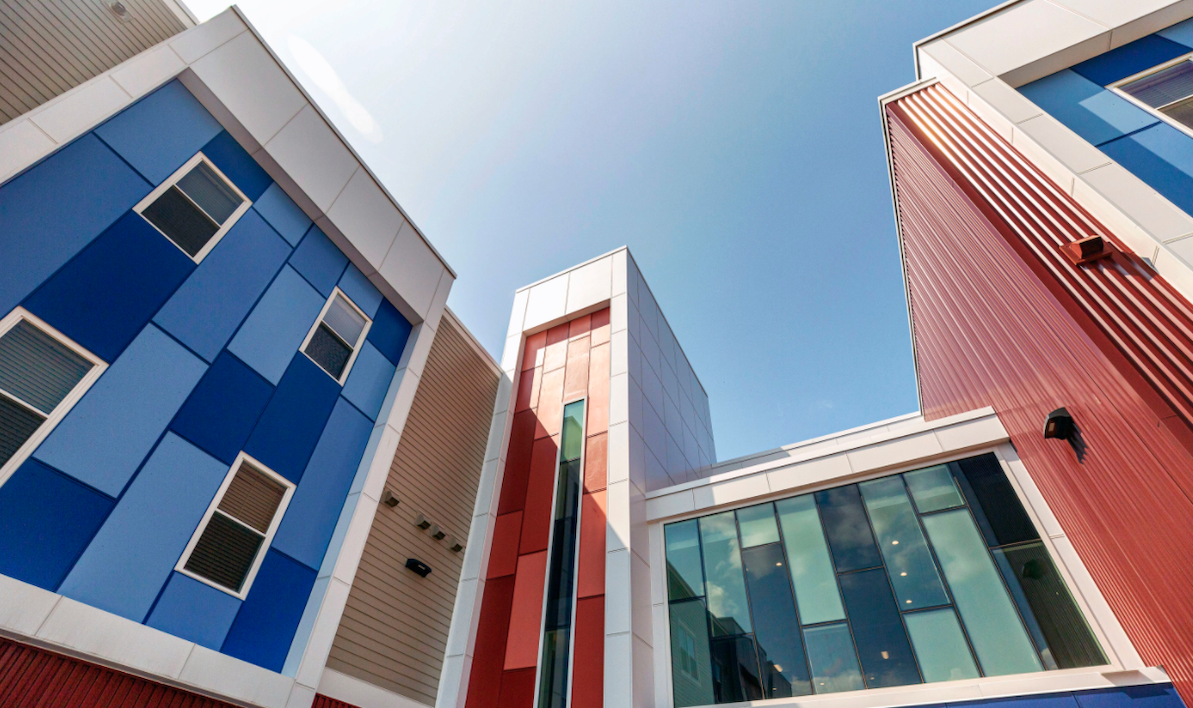
The building is constructed of durable materials including a brick base, metal panels, and fiber-cement siding.
Freedom Commons is part of a program that seeks to create a community based on restoration rather than retribution by serving the population with the highest risk of future incarceration. The future of this area is hopeful, as Freedom Commons took on the task of being the first restoration in an ongoing implementation of redevelopment.
3365 Third Avenue LEED Platinum Affordable Housing
This LEED Platinum project demonstrates that quality housing can be both affordable and sustainable. Designed to encourage community-building, this low-energy, high-performance building developed by Bronx Pro Group and designed by Steven Winter Associates consists of 30 studios to four-bedroom units for low- to moderate-income families. (All photos: Bronx Pro Group)
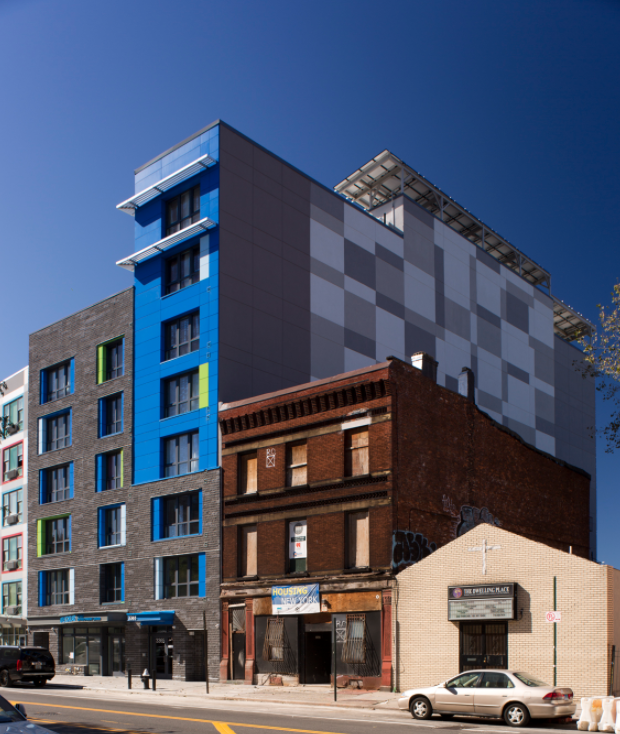
The 3365 Third Avenue building provides efficient heating and cooling, as well as LED lighting and low-flow plumbing fixtures that increases efficiency and help residents keep utility payments in check. A rooftop solar array and green roof provide functional and aesthetically pleasing places for residents.
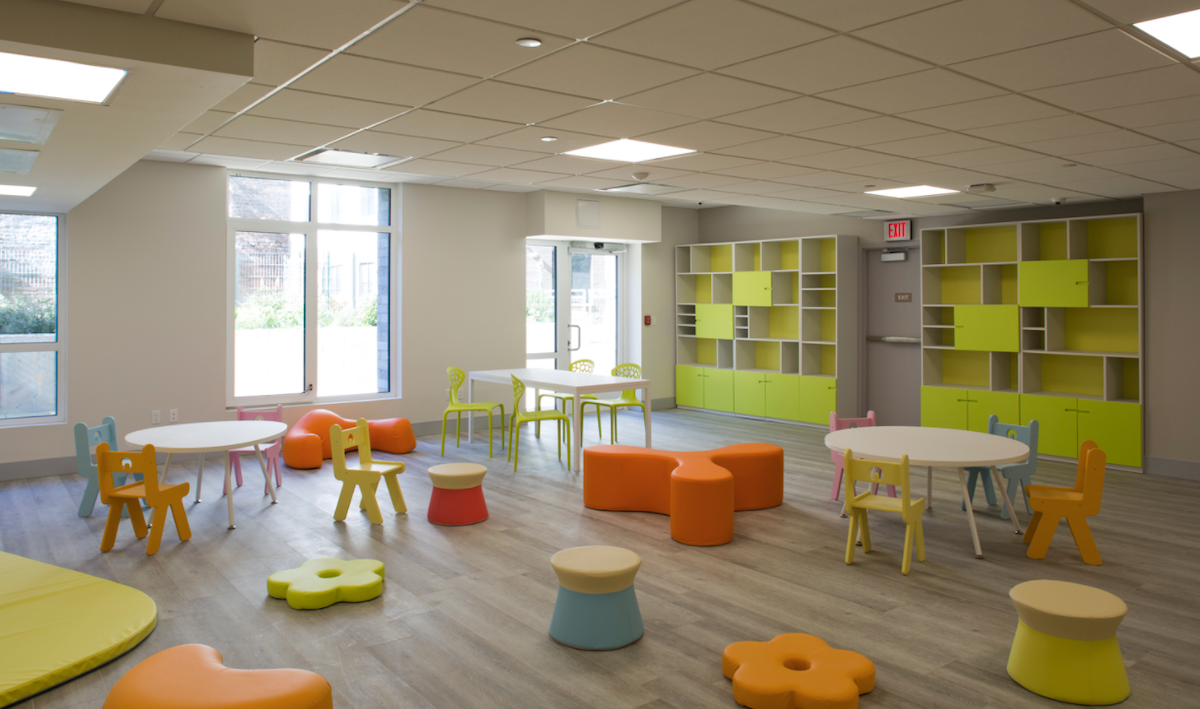
The 46,993-square-foot project also includes a courtyard and fitness room and supports the Bronx community at large through the Little Scholars Early Development Center, a year-round preschool in the base of the building.
3365 Third Avenue is one of more than a dozen buildings in Bronx Pro Group’s portfolio that support the organization’s mission to "develop quality housing that is both affordable and sustainable with an increasing focus towards community building.” As part of Bronx Pro’s goal of developing affordable housing, 3365 Third Avenue consists of 30 studio to four-bedroom apartments for a low- and moderate-income population that includes formerly homeless families.
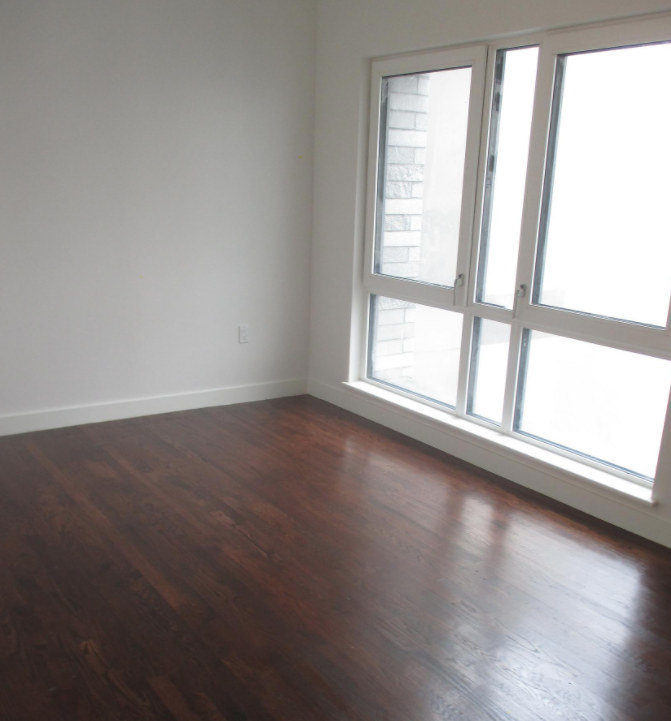
Sustainable features include a robust and air-tight insulated concrete form envelope with fiberglass triple-pane windows, VRF (variable refrigerant flow) HVAC systems that provide heating and cooling to each apartment, and an in-unit energy recovery ventilator (ERV), which manages the kitchen and bathroom exhaust while also providing ducted fresh air.
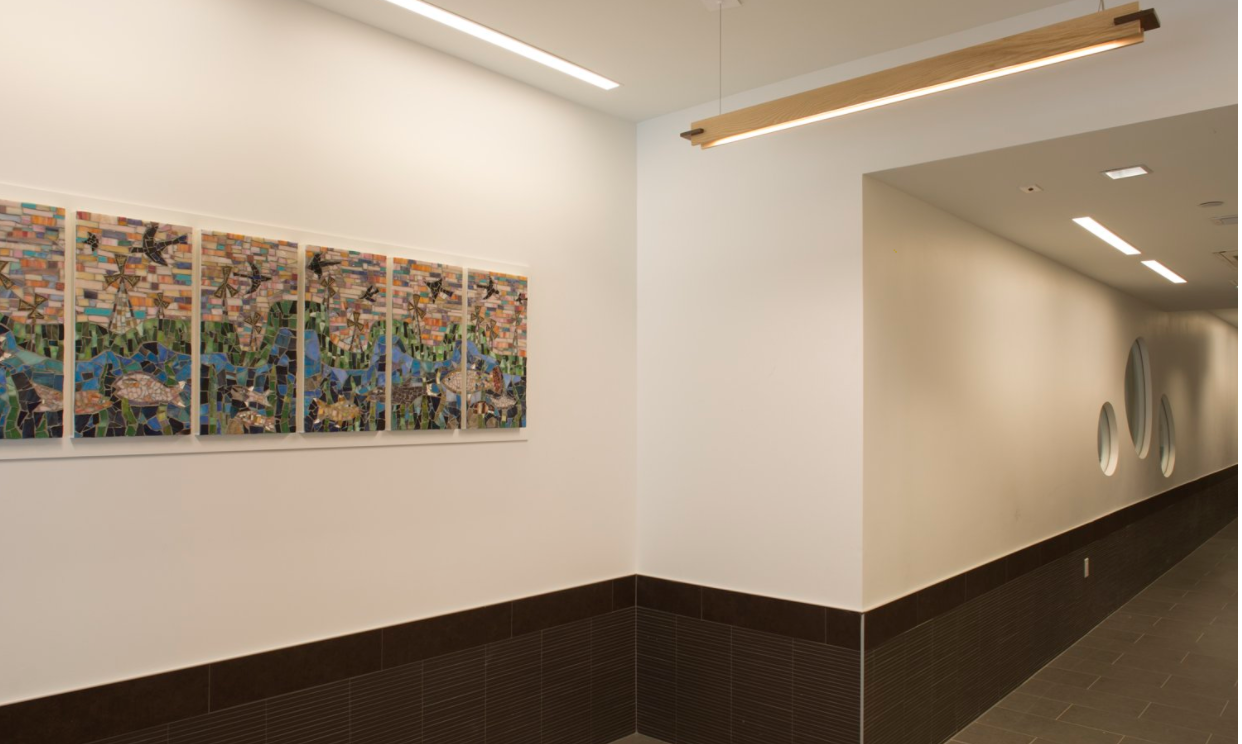
High-efficacy LED lighting is installed throughout the building, along with low-flow plumbing fixtures. A rooftop solar array, as well as a green roof installed at residential floor terraces, and high-albedo roofing elsewhere are functional and aesthetically pleasing design features.
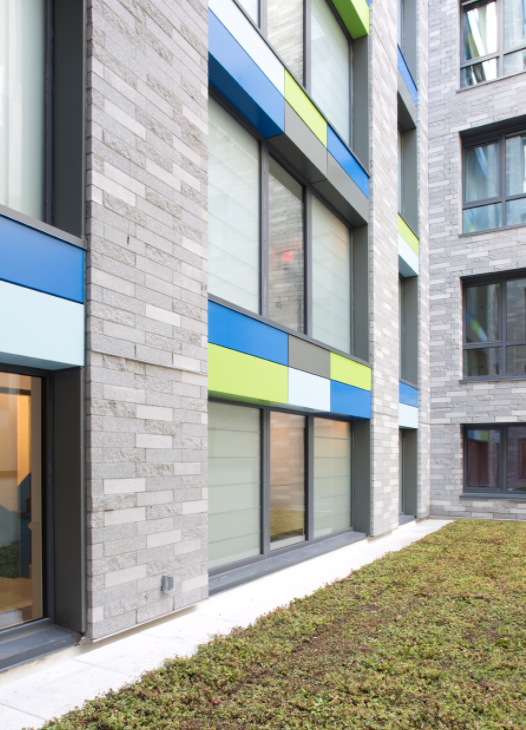
In addition, 3365 Third Avenue fosters a sense of community through its common spaces, such as the back courtyard and fitness room, which facilitate resident interaction. This project builds on Bronx Pro’s experience with previous affordable housing projects and goes beyond them by synthesizing the multifaceted sustainability measures defined by the LEED for Homes Multifamily Midrise rating system with the low-energy, high-performance goals of the PHIUS + program. This outstanding affordable housing project not only raises the bar for buildings within Bronx Pro’s portfolio of projects but within the Bronx as well.
